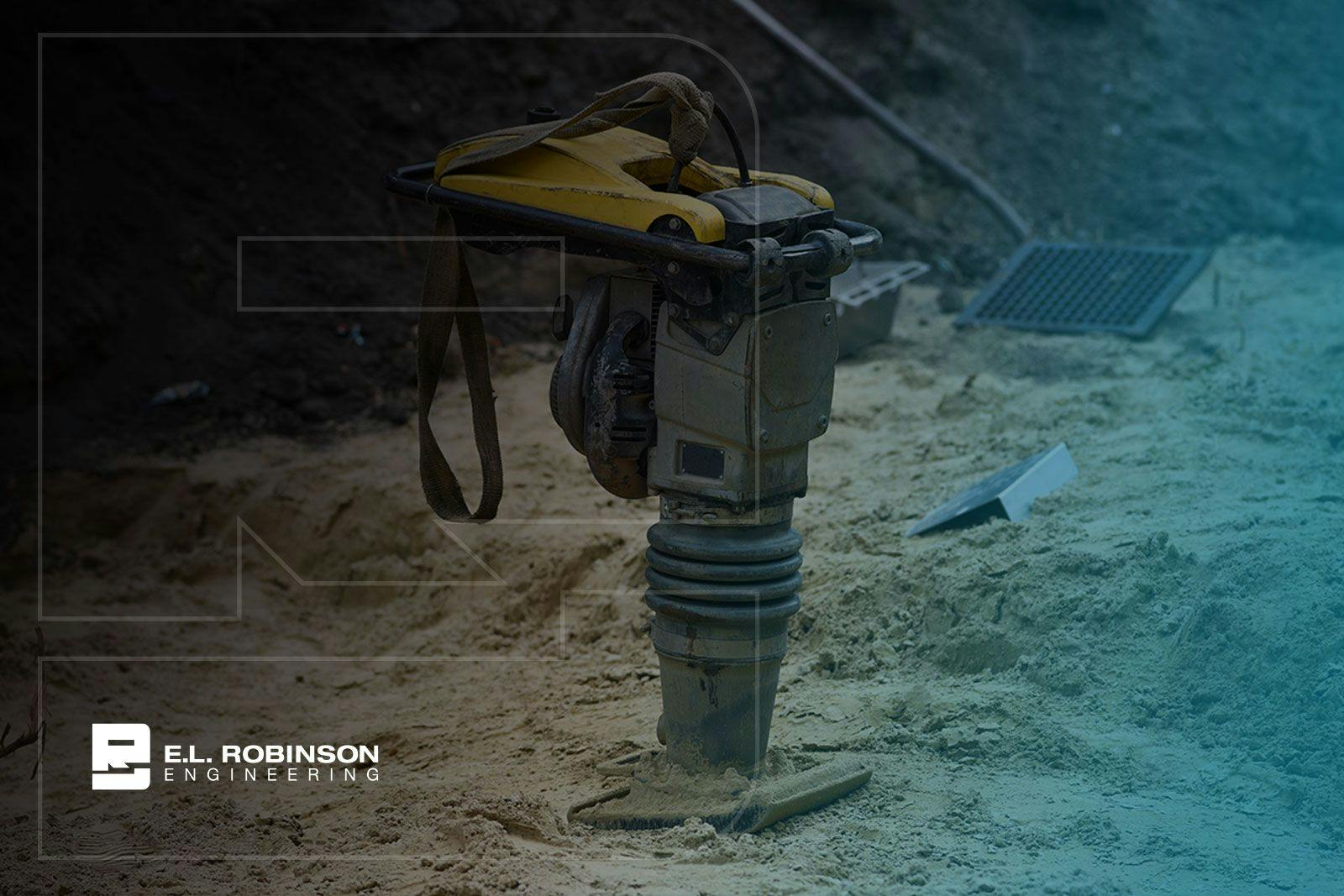Jan 09, 2023The Nuclear Gauge is Your Friend for Bulk Density

Achieving Proper Soil Compaction in Road and Bridge Construction
Most people can imagine the complexity of building a bridge or a highway, but it’s easy to overlook the nuanced complexities of the surrounding earth and aggregate to ensure the stability of structures and roadways. These require special instruments like a nuclear gauge to confirm appropriate bulk density throughout excavation and embankment around structures. And there are many layers.
Soil Compaction and the Gravity of Bulk Density
Bulk density refers to the soil's ability to function for structural support, soil aeration, and water and solute movement. It’s so important to structural integrity that it is regulated at the state level. It’s also a measurement used to convert soil weight and volume.
Those not in the civil engineering and construction industry might not realize the importance of earthwork. Building any structure from a sidewalk, embankment, or underground pipes to a highway or bridge requires displacement and replacement of the surrounding soil and aggregate.
Soil compaction around the new structure sounds simple, but it involves painstaking testing to ensure that the bulk density is in range at every level for maximum stability. Excess moisture displaces the soil, while insufficient moisture means the soil will fail to bond. Either extreme is a problem for structural stability, and that’s a problem for both safety and compliance.
Getting Granular on Measuring Bulk Density with a Nuclear Gauge
Although many professionals in the industry have a decent visual sense of bulk density, testing is necessary to ensure safety and compliance with state regulations. This can happen over days, weeks, or even months, depending on the scale and complexity of the structure.
How the Nuclear Gauge Works
The nuclear gauge operator drives a hole into the ground and sets the gauge to send a radiation pulse into the surrounding soil. This is called “direct transmission” testing. It then measures how many molecules return and how long it takes for the pulse to bounce back to the gauge from the lowest point it reaches. The molecules bounce off water molecules, so the more moisture in the soil, the quicker and more complete the returning pulse, and the less dense and stable the earth. Testing can also be performed without driving a hole (on materials such as asphalt), known as "backscatter" testing.
A long-trusted “friend” when it comes to structural integrity, the nuclear gauge is the current preferred method for measuring bulk density. Unlike its cumbersome precursor, the volumetric sand cone test that was once required by the Corps of Engineers and still used by some today, the nuclear gauge saves time and thus money relative to other methods. In fact, it is required in West Virginia, where we do a great deal of structural work.
Testing for Bulk Density
The first step in using a nuclear gauge to conduct a Field One Point Proctor test for bulk density in soil compaction is to establish maximum density and optimum moisture content (the moisture level at which you reach maximum density).
To determine the max density, we first conduct a preliminary direct transmission density test and collect a sample from the site. We run a proctor test on the sample and use the results along with the data from the gauge to determine the maximum density and optimum moisture according to previously established curves (e.g. WVDOH tables). Finally, we run additional four tests with the gauge. The average of the five tests needs to meet at least 95% of the maximum density in order to meet the state specifications. This becomes the Field One Point Proctor for further testing on the site. Find additional details on the One Point Proctor test here.
Next, come all the layers. Backfilling is a slow process, but there’s no way around it. Structural integrity is too important. To properly test for bulk density during soil compaction, fill and test the soil in four-inch to six-inch lifts. (Different situations will require different increments.) Each layer must meet the state requirements for max density.
Nuclear Gauge Considerations
Using the word nuclear always brings up questions. When used properly, the nuclear gauge is safer than our daily exposure to the sun, but like all things nuclear, it’s also regulated by the U.S. Nuclear Regulatory Commission (NRC). That means we maintain our licensed safety requirements, including a Radiation Safety Officer (RSO), Heather Woods Shaffer. All gauge operators are required to maintain radiation safety training certification. We also audit and leak test every gauge every six months and document results.
As an extra precaution, everyone who uses the gauge carries a Thermoluminescent Dosimeter Badge, which measures exposure to radiation. Every three months, the badges get sent in to report exposure. In all our years of testing, we’ve never had a reading above the requisite threshold. This extra testing is not required for our license, but with our family of colleagues, we can never be too careful.
Field Expertise with the Nuclear Gauge
The nuclear gauge is one of the essential tools of our trade, and we depend on it daily. We also help others with bulk density testing using the gauge. Matt Campbell, Project Inspector in our West Virginia office, teaches training classes for the West Virginia Division of Highways (WVDOH) on “Soil and Aggregate Compaction Technicians.”
If you want to learn more about soil compaction, bulk density, and the nuclear gauge, visit our Geotechnical Engineering Services page or contact us with questions.